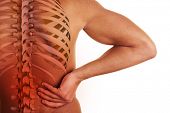
POLYMYALGIA
NATUROPATHIC CASE STUDY: POLYMYALGIA
A 58 y.o arborist has been diagnosed with polymyalgia by his G.P. His symptoms are persistent pain for at least 1 month involving the following areas: neck, shoulders, and pelvic girdle, morning stiffness and loss of weight.
Diet tips for pain and inflammation
- Increase Magnesium rich foods in your diet, these include almonds, cashews, molasses, parsnips, wholegrain cereals. Calcium rich foods are almonds, dairy products, egg yolk, green leafy vegetables, molasses and sardines
- Reduce acidic foods which contribute to inflammation such as red meat, sugar, alcohol, preserved and processed foods
- Alkalize the body by increasing foods which recorrect pH levels such as water, lemon juice, green barley powder, miso soup, sprouts, nuts and seeds, fish and alive food.
- Flax seed oil or fish oil contain essential fatty acids that dampen inflammation pathways
- Bromelain - a natural anti inflammatory sourced from pineapples
- Magnesium formula foe muscle relaxation which may help to ease the aches and pains
- Anti-inflammatory herbs such as Boswellia, Turmeric, Ginger, Jamaican Dogwood, Devil's Claw - relieve pain and inflammation
- MSM (Methyl-Sulfonyl-Methane) - sulfur rich supplement that may help to ease muscle pain
- Ubiquinol is a supplement which increases oxygen, energy production and circulation to the muscles
- Green lipped muscles capsules are a potent natural anti-inflammatory.
- Gentle exercise such as walking and swimming
- Relaxation techniques such as deep breathing exercises and massage
- The healing power of a bath with some Epsom salts
